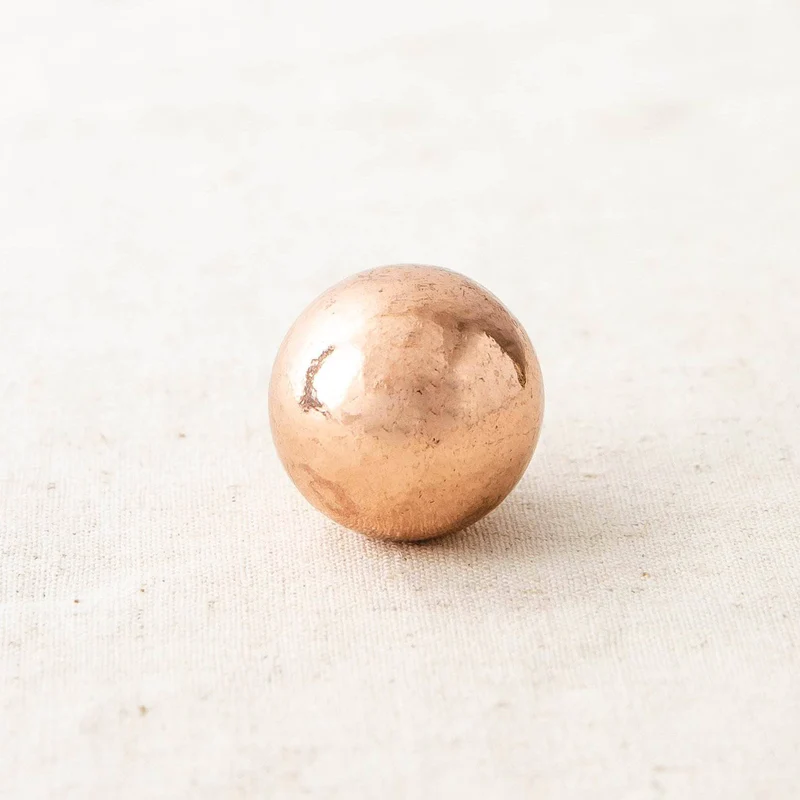Copper antiviral properties are a frontline defender against pathogens.
In a world increasingly conscious of hygiene and the spread of infectious diseases, the rediscovery of copper’s antimicrobial properties is a welcome development.
This ancient metal, known for its lustrous, reddish-brown hue, is now at the forefront of the fight against viruses, especially those that are skin-borne.
Understanding how copper can effectively combat pathogens not only broadens our arsenal against infections but also opens doors to innovative uses in public health safety.
Copper’s Antimicrobial Legacy: More Than Just a Coinage Metal
Copper’s use dates back over 10,000 years, with its antimicrobial properties likely recognized even in ancient civilizations.
However, it’s only recently that science has begun to unravel the exact mechanisms behind this effect.
Known as the oligodynamic effect, copper and its alloys exert a toxic impact on microorganisms, including viruses and bacteria, even at low concentrations.
Disarming Viruses: Copper’s Multifaceted Attack
- Structural Disruption: Copper ions aggressively attack the viral envelope or capsid, a critical component for a virus’s ability to infect host cells. Damaging this protective shield renders the virus non-infectious.
- Genetic Material Degradation: The ions also interfere with the virus’s genetic material, whether RNA or DNA. This interference halts the replication process, stopping the virus in its tracks.
- Reactive Oxygen Species (ROS) Generation: Contact with copper surfaces leads to the production of ROS. These reactive molecules further damage the virus, ensuring it cannot survive or proliferate.

A Broad-Spectrum Antiviral Agent
Copper doesn’t discriminate. Its ability to inactivate a wide range of viruses is a significant advantage, especially in healthcare settings where various pathogens are prevalent.
This broad-spectrum efficacy makes copper a versatile and invaluable resource in public health.
Practical Applications: Copper in the Modern World

Recognizing copper’s potential, its applications have expanded significantly.
Copper alloys are now integrated into frequently touched surfaces like doorknobs, railings, and hospital equipment to reduce the transmission of pathogens.
Innovations extend to personal protective equipment, with copper-infused masks and clothing becoming more prevalent.
The Rapid Response of Copper
Speed is crucial in combating pathogens, and copper acts fast.
Studies have shown that copper surfaces can inactivate viruses within minutes, providing a passive yet powerful defense against the spread of infections. Here are some examples about the effectiveness of copper:
- Influenza and Norovirus on Copper Surfaces: Published studies have confirmed the contact-killing property of copper surfaces against various viruses, including the influenza virus and norovirus. For instance, one study found that it took around 80 minutes more to inactivate all viruses on a surface with a lower copper content compared to one with 79% copper (source: National Center for Biotechnology Information).
- SARS-CoV-2 Inactivation: A study by researchers at the University of Southampton, UK, discovered that SARS-CoV-2 could be inactivated on copper surfaces in as little as one minute, a significantly quicker inactivation time compared to previous findings (source: News-Medical.Net).
- Copper Alloys and COVID-19: Research indicates that copper-based alloys possess excellent potential in controlling the spread of infectious diseases, including effectively inactivating the COVID-19 virus. This review highlights copper’s importance in reducing the spread and infection of COVID-19, discussing various copper-based material systems such as alloys, nanomaterials, and coating technologies (sources: PubMed, National Center for Biotechnology Information).
- Virucidal Properties of Copper and Copper Alloys: Several studies have tested the virucidal properties of copper and copper alloys. One study demonstrated the virucidal activity of Cu(II) ions on five viruses, including enveloped and non-enveloped, single- and double-stranded DNA or RNA viruses. Another study observed the effects of copper on murine norovirus, a surrogate for the human norovirus, showing that the virus’s viability was lost upon exposure to copper and copper alloys but retained on stainless steel (source: Communications Materials – Nature).
- Luminore CopperTouch™ Surface Coating: This technology was tested for its ability to inactivate filoviruses and SARS-CoV-2. The results showed that copper and copper-nickel surfaces inactivated 99.9% of the viral titer of both Ebola and Marburg viruses. Additionally, copper surfaces inactivated 99% of SARS-CoV-2 titers in 2 hours, close to the limit of detection. This positions Luminore CopperTouch™ as a viable tool to improve infection control in various public and healthcare settings (source: PubMed, National Center for Biotechnology Information).
These studies collectively underline copper’s significant antiviral properties and its potential as a frontline defense against various pathogens, including COVID-19.
Beyond the Surface: Copper’s Role in Public Health
While copper’s surface-based antimicrobial properties are well-documented, its potential doesn’t stop there.
Research is ongoing into how copper can be incorporated into air filtration systems, coatings, and even in the medical field for wound healing and infection control.
A Complementary Strategy, Not a Standalone Solution
It’s important to emphasize that copper is part of a broader infection control strategy.
Regular hygiene practices, such as hand washing and sanitization, remain essential. Copper enhances these practices, acting as an additional layer of defense in our everyday environments.
Copper: An Ancient Metal for a Modern Crisis
In our continuous battle against infectious diseases, copper stands out as a key ally.
Its potent antimicrobial properties, broad-spectrum efficacy, and rapid action make it more than just a metal; it’s a vital component in our public health toolkit.
As we embrace technology and innovation, let’s not forget the power of this ancient metal, which has been protecting us for millennia and will continue to do so in the years to come.
